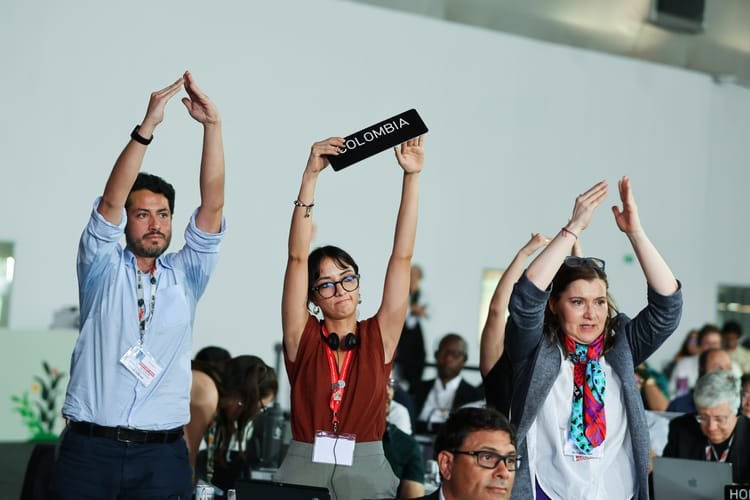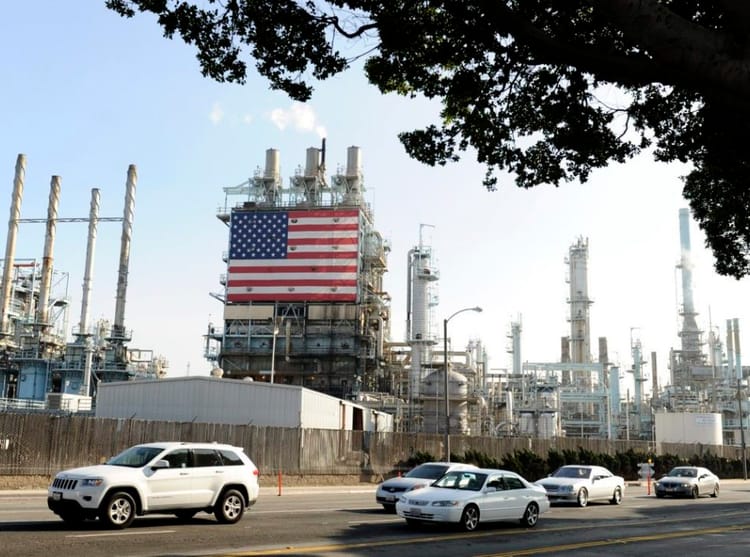Why Is Japan Pushing the G7 to Make Gas Part of the Energy Transition?

Climate is on the agenda for this weekend's G7 Summit in Hiroshima, Japan (bit on the nose for the G7—hope they hit up the memorial!). Japan is this year’s G7 president and the only Asian member of the "Group of Seven," seven of the world's advanced economies, including Canada, Italy, Germany, France, United Kingdom and United States, all large fossil fuel funders. Japan's government has been coming under fire for months as both a regional blocker to climate action and a force within the G7 pushing the group towards continuing to embrace liquefied natural gas (LNG) as a climate solution.
At issue are Japan's "Beyond Zero" commitment and the "Green Transformation” or GX, strategy intended to deliver on that commitment. The GX is a new industrial and energy policy that mobilizes over $1.1 trillion in public and private investment to decarbonize the economy over the next 10 years, but it relies heavily on liquefied natural gas, ammonia co-firing related to the country's large fleet of coal plants, and restoring or building new nuclear plants that are unlikely to be online in time to meet the country's goal of greenhouse gas emissions by 46% by 2030 from 2013 levels.
Beyond the shortcomings of its own plan, Japan has positioned itself as a leader of the transition in the rest of Asia, and Prime Minister Fumio Kushida has also said he wants to "increase Japan's involvement in the Global South." Japan has tended to work against the idea of a transition dominated by renewables in particular, as energy ministers in the country have long worried that it lacks the land and critical minerals supply to make large-scale renewables work. The fact that China boasts some of the world's largest stores of critical minerals also plays into Japan's stance.
Last month, energy and environment ministers from G7 countries met in Japan in advance of the summit to discuss climate commitments and energy needs in the wake of Russia's invasion of Ukraine. There as well, Japan was pushing the group to step up gas investments. Reuters reported that "an initial draft communique proposed by Tokyo had said 'demand for (Liquefied Natural Gas) will continue to grow' and called for 'necessary upstream investments in LNG and natural gas.'"
Canada, the UK, and France pushed back and successfully kept such language out of any G7 commitments, but activists expect the same debate to emerge this weekend. While the US has tended to side with European countries on this question, the government is being heavily lobbied by the fossil fuel industry to reconsider that position. Asian demand for LNG, coupled with a supposed decline in Russian supply of LNG (more on that in a minute), is being cited as the primary reason to build multiple new LNG export terminals in the U.S.
Oil and gas companies that have been trying to build export terminals on the Pacific coast for years to more easily reach customers in Asia have suddenly found a home in Mexico. Multiple projects are currently being built there, most of which will still go through US permitting processes because the gas they will be exporting will flow exclusively from the US (predominantly the Permian Basin).
“There’s somewhat of a bait and switch going on here,” said Alan Zibel, research director for Public Citizen. “The public have been told that these terminals and these exports are to help Europe because of Russia-Ukraine, but in reality, the bulk of the contracting volume is still going to Asia.”
Meanwhile, our reporter in France, Anna Pujol-Mazzini, reports that in 2022, far from cutting off its gas supply to Europe, Russia became the second largest supplier of LNG for the EU. In fact, Russian LNG imports to Europe increased by 46% between January and September 2022 compared to 2021. France, the Netherlands, Spain and Belgium were the main importers of Russian LNG in 2022, with a third of Russian LNG shipments to Europe headed to France, the staunchest anti-gas voice in the G7 at the moment.
In France, the supply goes through TotalEnergies, which owns Russian assets in the gas sector. While Total claims to have withdrawn from the Kharyaga and Termokarstovoye oil and gas fields in response to the war, the group still owns 19.4% of Russian gas producer Novatek and 20% of the Yamal LNG consortium, a giant industrial LNG production complex in Siberia. In 2022, Yamal LNG announced record production figures with 21 million tonnes of LNG exported. A quarter of this production was exported directly to France. Only two countries in Europe—the U.K. and Lithuania—have completely halted Russian LNG imports.
Moreover, European governments have become less interested in American gas exports over the last several months, not just because most still have Russian gas on tap and because they have successfully reduced demand (what a concept!), but also because American companies have been aggressively pushing long-term contracts that would lock governments in for 20 years or more, making it impossible for most to meet their climate goals. Those goals mean slightly more in Europe where governments have been facing litigation for acting against their stated climate commitments and, in many cases, losing in court.
SO, as we head into a big G7 debate over gas this weekend, let's keep in mind that:
- first, Russia-Ukraine has not reduced the amount of Russian gas being imported into Europe—those imports have increased;
- American companies are using Russia-Ukraine and Europe as the excuse to go wild developing and exporting LNG, but actually building projects meant to supply Asia;
- We're starting to hear whispers that projections of demand there will far outpace reality;
- Japan is asking everyone to produce more gas to drive down prices in the near term, with little thought to how it will impact their or anyone else's climate goals;
- Meanwhile, U.S. gas prices are expected to soar yet again, despite all this new supply
- Which won't stop the oil and gas lobby from using those price hikes (driven by its own focus on exports) to justify...you guessed it, more drilling, more terminals, more gas lock-in.
This week's climate must-reads
- The Skeletons in Big Oil's Closet - There’s growing evidence that fossil fuel companies knew their product would harm the climate, and that’s driving lawsuits around the world. By Manuela Andreoni for The New York Times
- Related: Highly recommend signing up for The Wave, Isabella Kaminski's excellent newsletter tracking all of the climate litigation around the world, esp for its coverage of non-U.S. cases, which we get almost no reporting on stateside!
- What the Hell Is Going on at The Sierra Club? The progressive organization now faces two National Labor Relations Board charges and widespread criticism from staff, following chaotic layoffs. By Kate Aronoff, for The New Republic
- How to Quit Cars, by Adam Gopnik for The New Yorker - technically a book review of Daniel Knowles’s “Carmageddon” and Henry Grabar’s “Paved Paradise", also a great read on a climate villain we hear less about than we should: the car.
- Boots on the Ground - As FEMA struggles to keep up with climate disasters, far-right extremist groups see an opportunity. Got a preview of this terrifying but also terribly important tale at the SEJ conference and Zoya Tierstein knocked it out of the park, for Grist.





